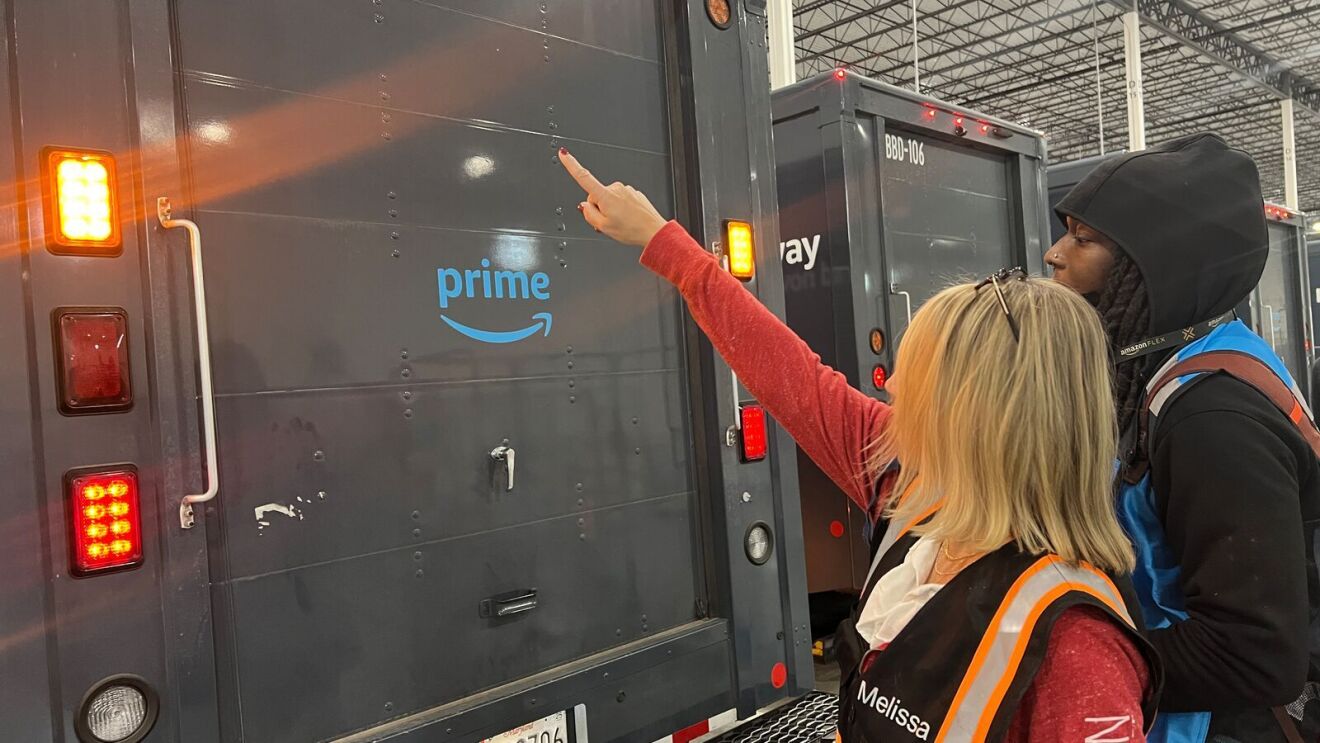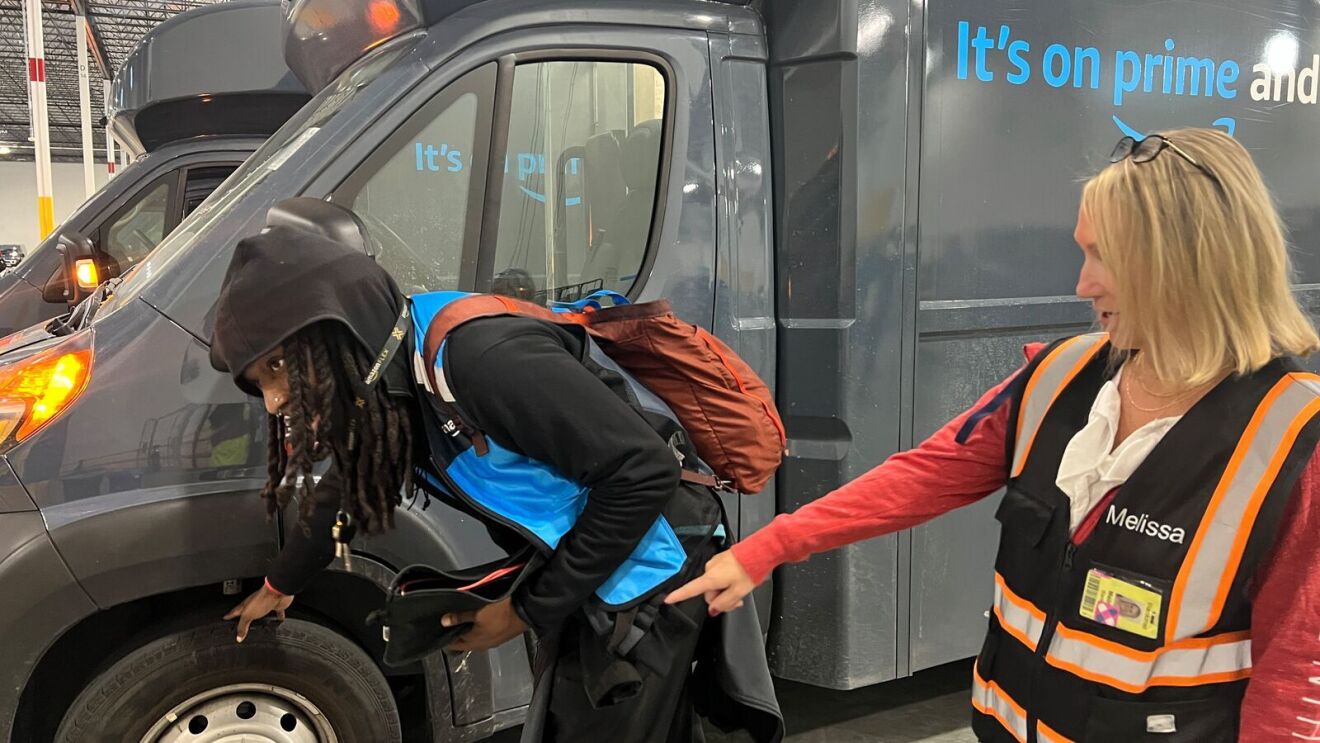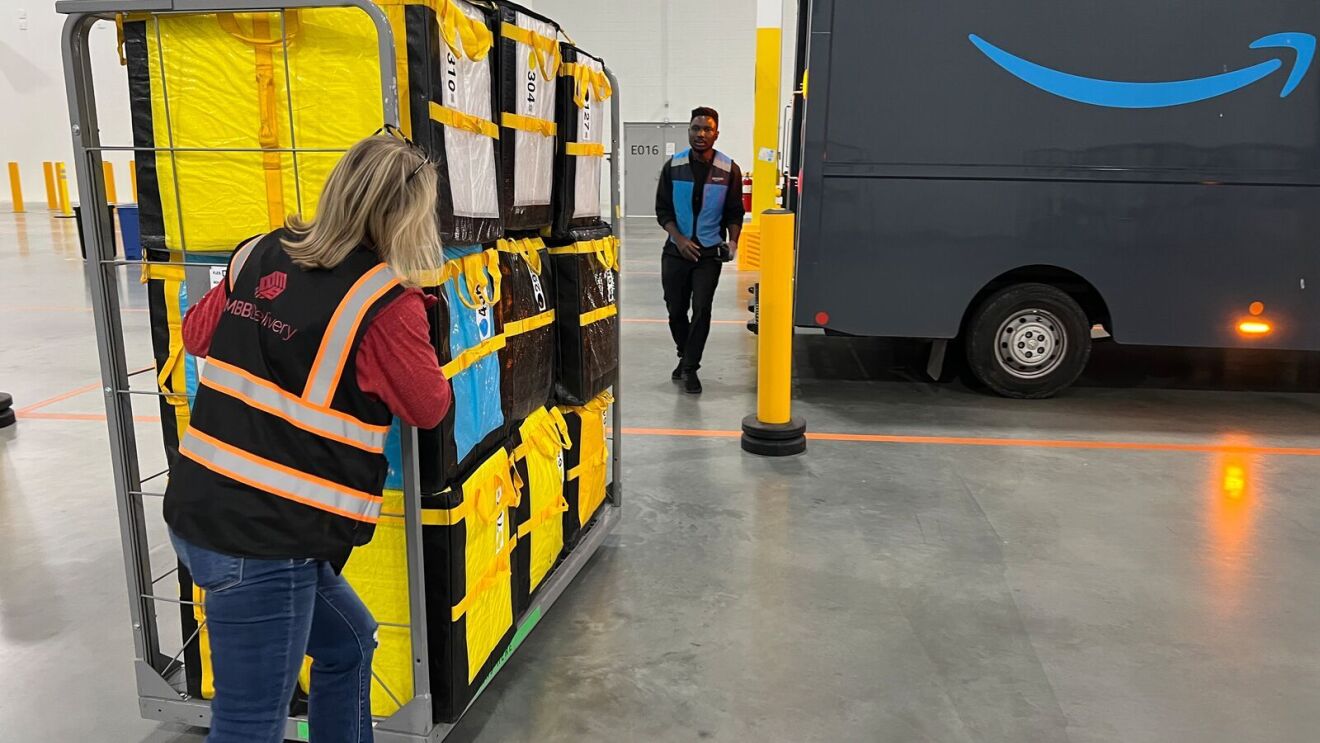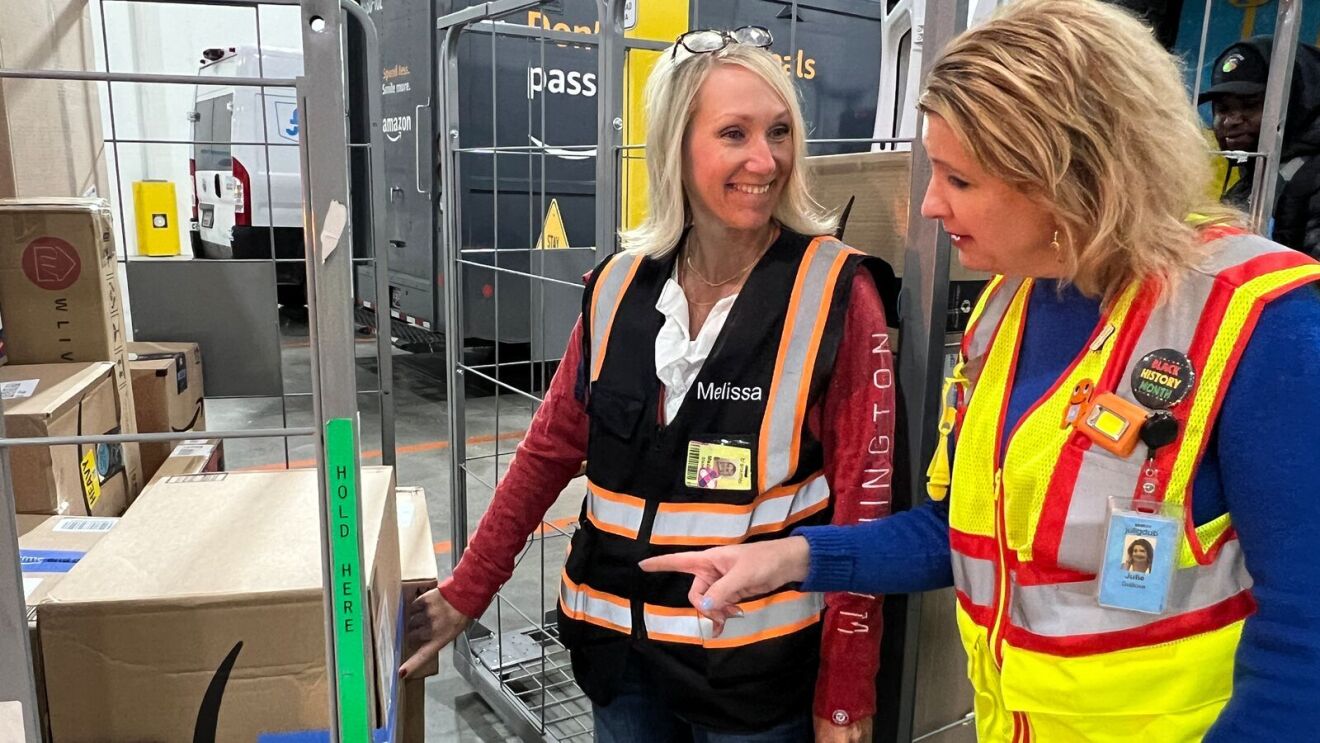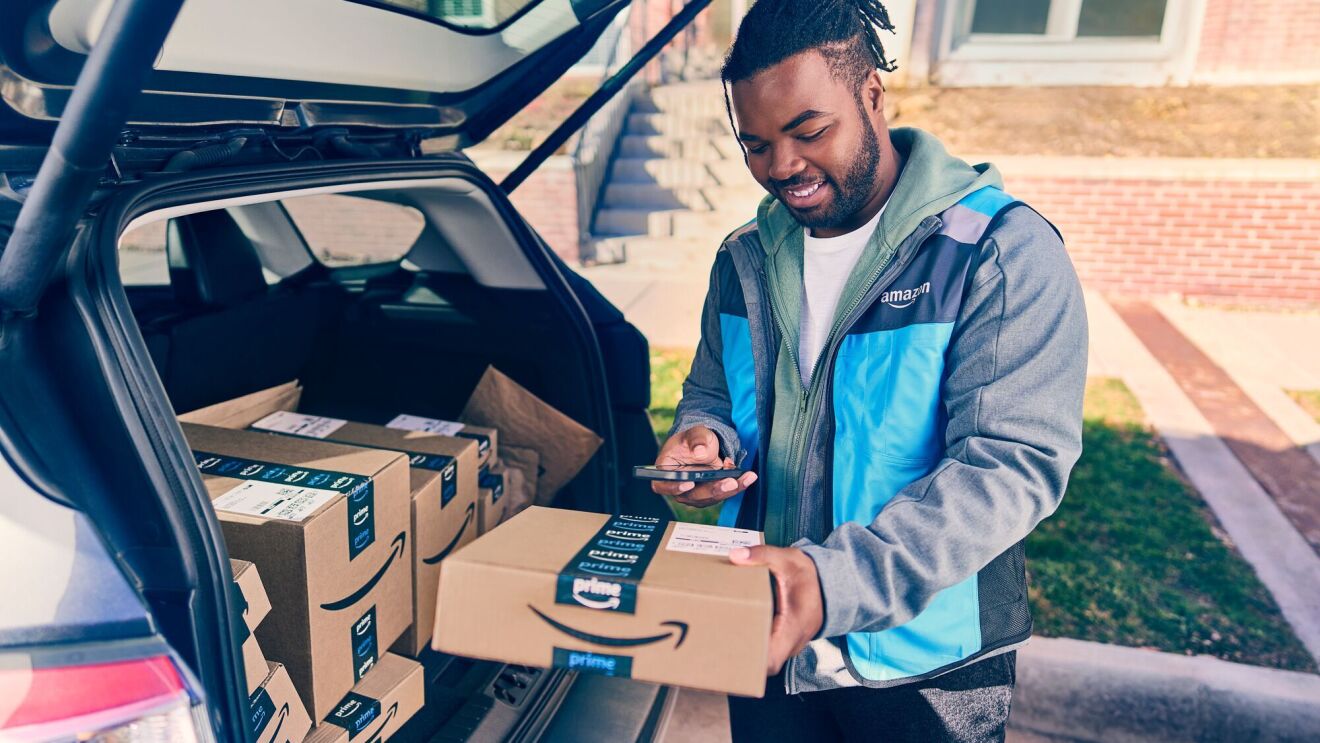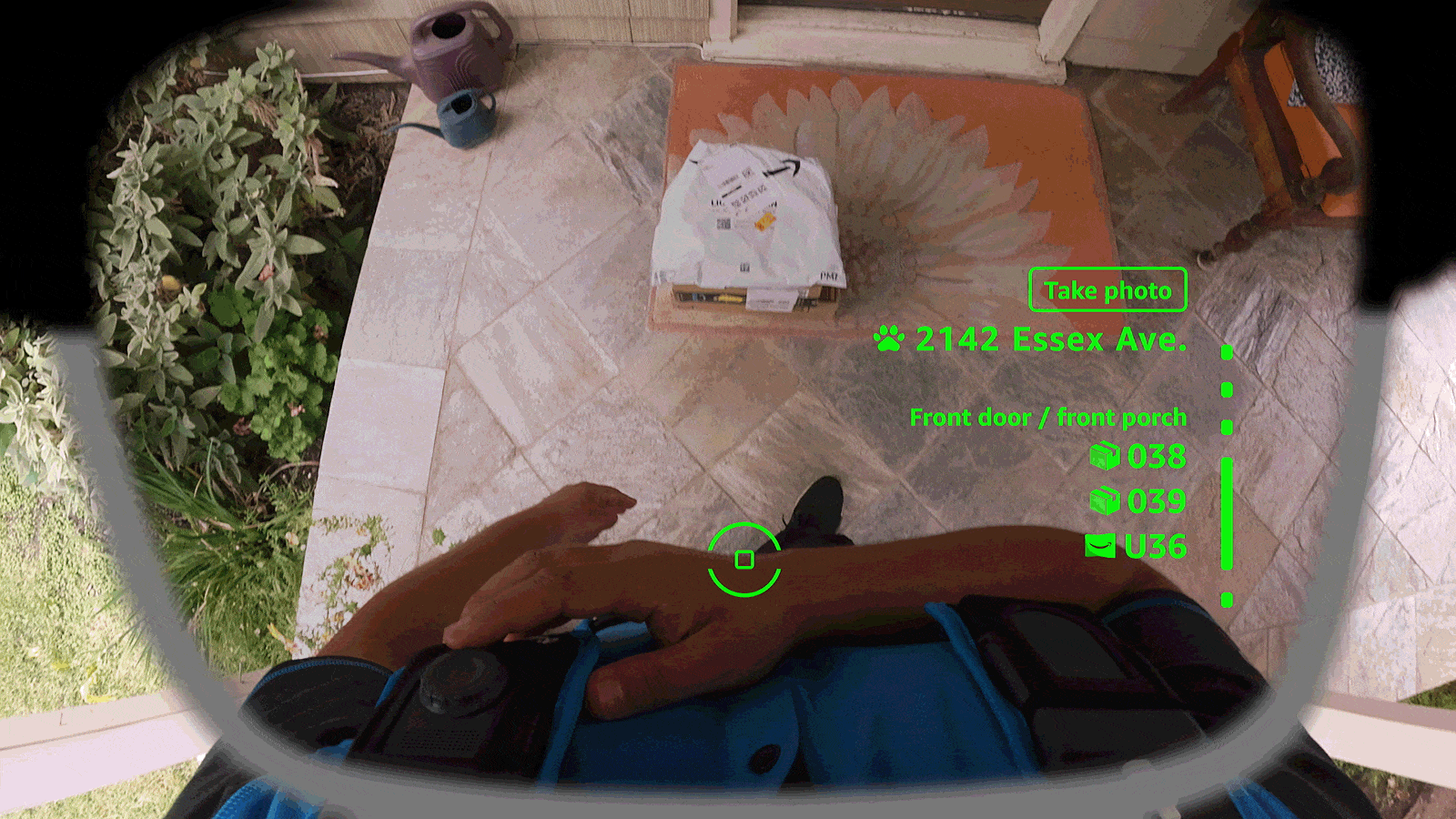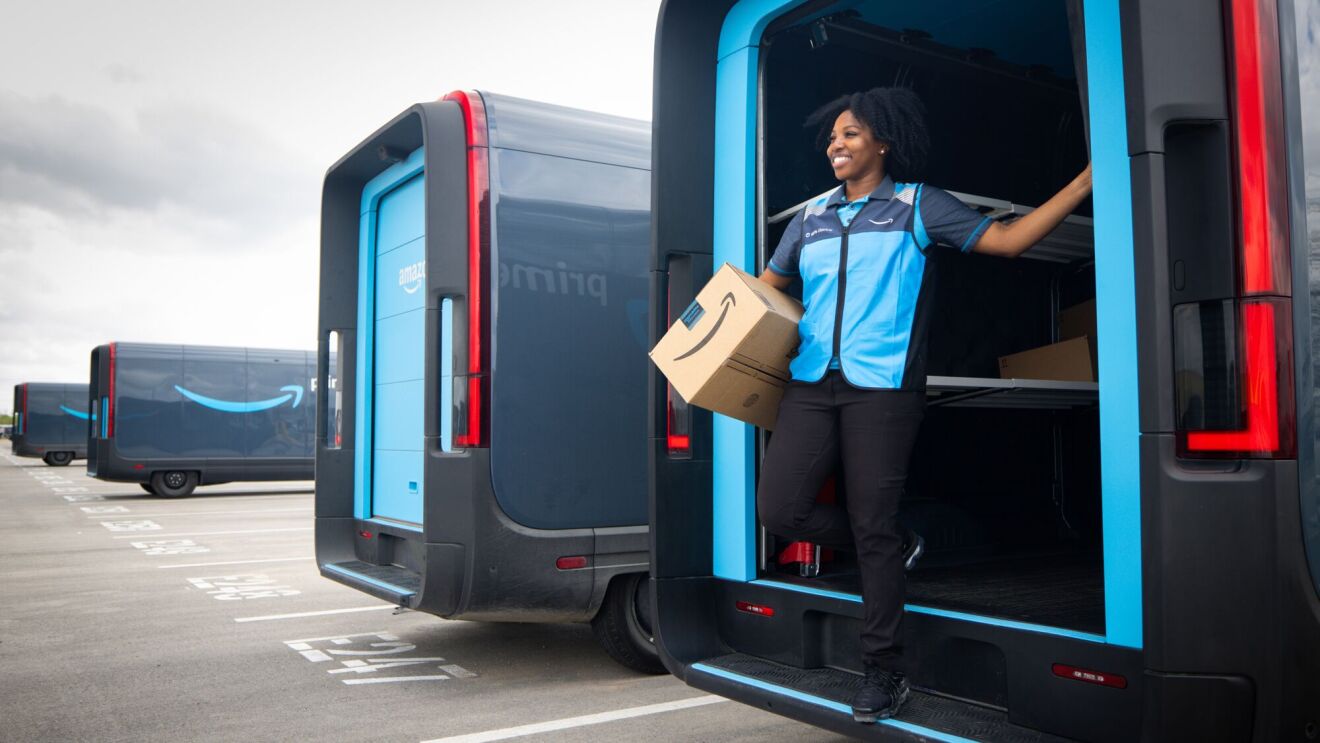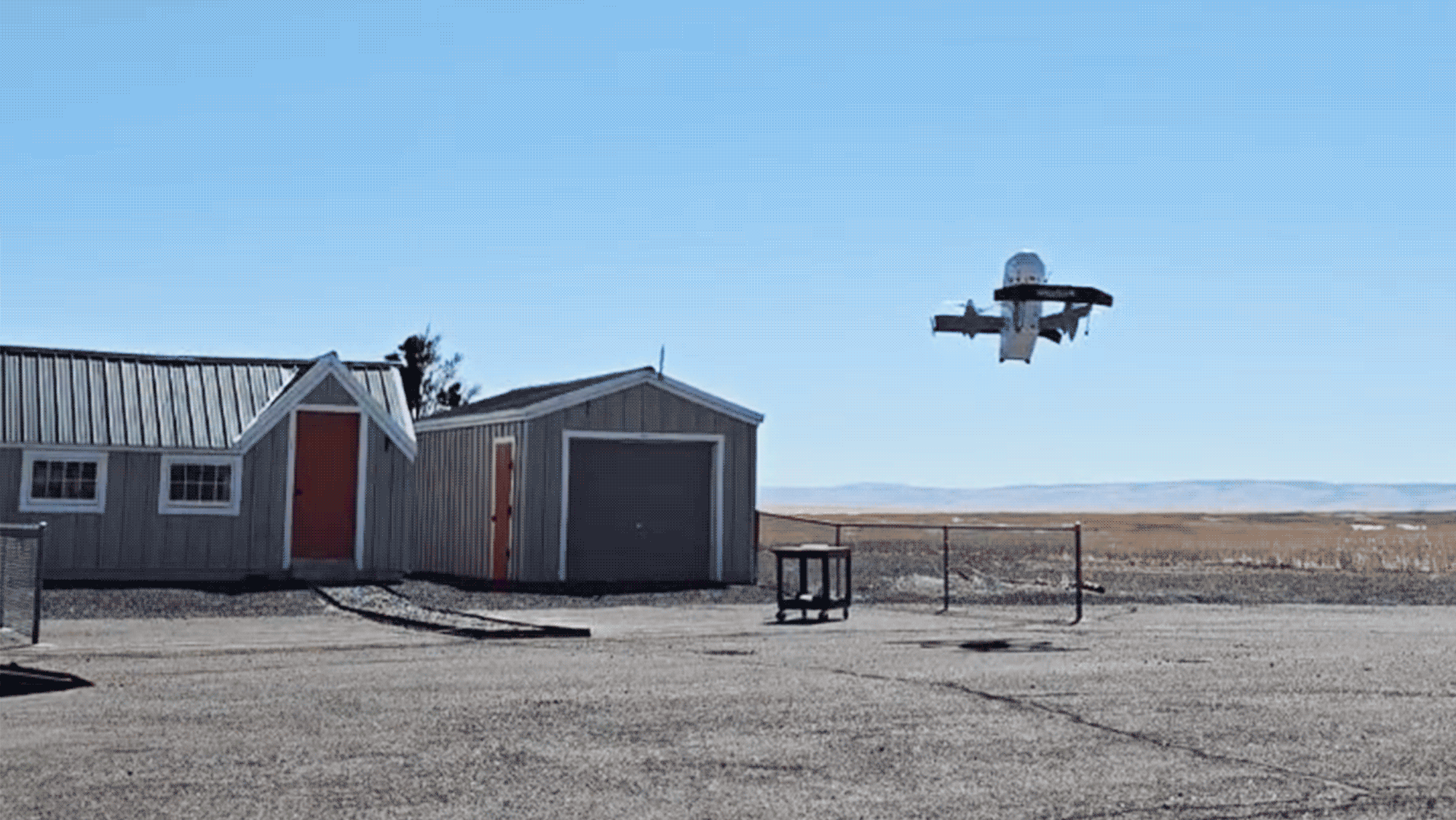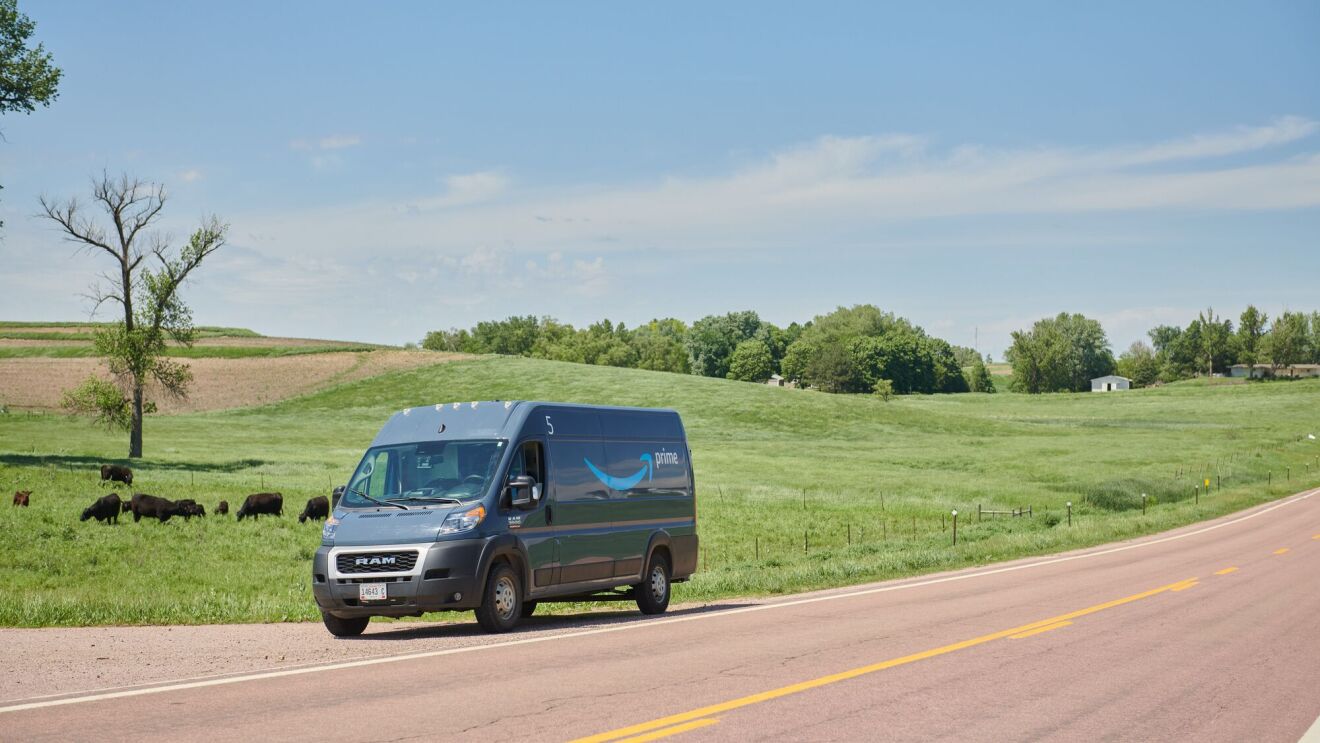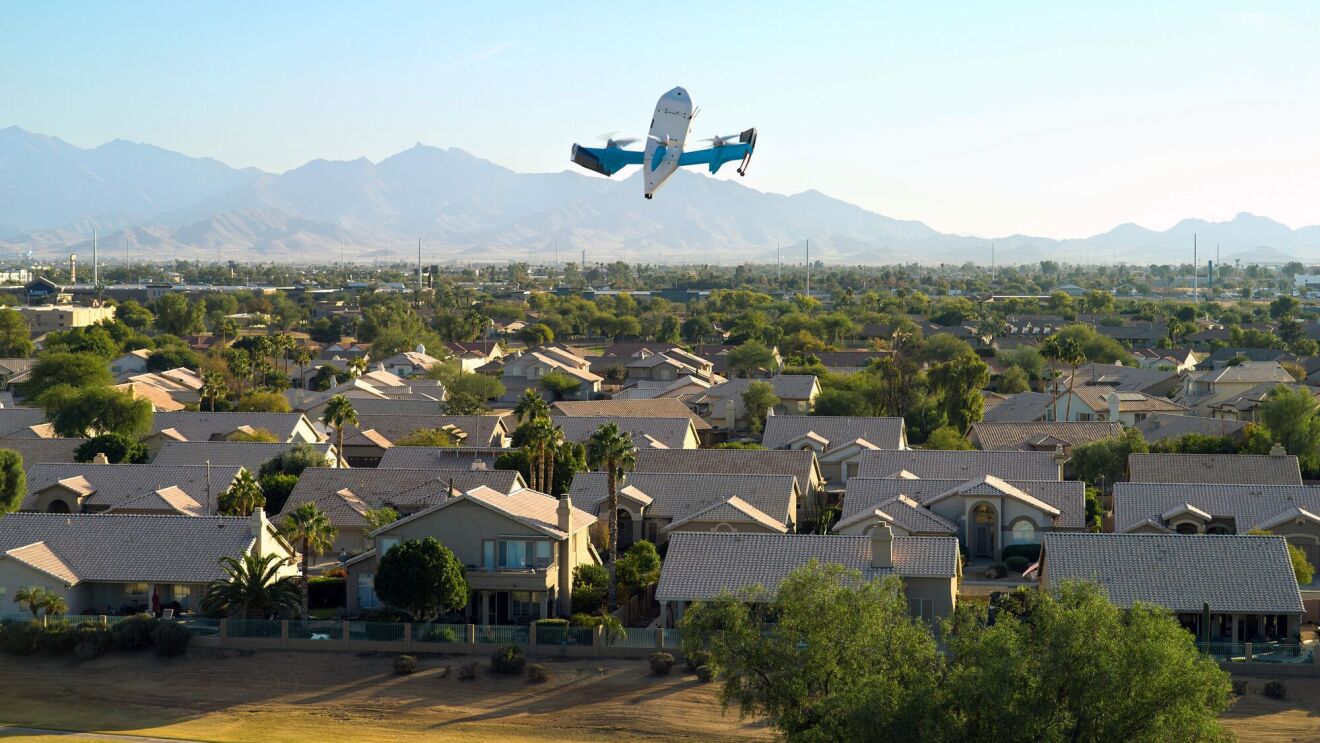Amazon launched the Amazon Delivery Service Partner (DSP) program in 2018 as a way to connect with aspiring entrepreneurs and help them to build and scale their own delivery business with Amazon. Melissa Blanken, an Amazon DSP and co-owner of MBB Delivery, shares a typical day in her life.
My husband, Brad, and I have been DSPs since September 2020. Our company, MBB Delivery, operates out of two Maryland stations in the Washington, D.C., area.
We both had corporate careers before this, and what attracted us to the program was the idea of having the support of a big company and brand name like Amazon, but also being able to run our own business and make our own decisions for our company and our employees.
8 a.m.
01 / 02
I arrive at our delivery station in Beltsville, Maryland. One of the first things I do is check in with our fleet manager, who examines our vehicles and makes sure they’re ready to hit the road. We are all about safety, so our team assesses each vehicle every day, and our drivers do safety inspections at the beginning and end of their shift. After fleet inspections, I meet with our morning dispatchers to assess our readiness for the day—call-outs, van availability, and information we need to share with drivers that morning.
8:45 a.m.
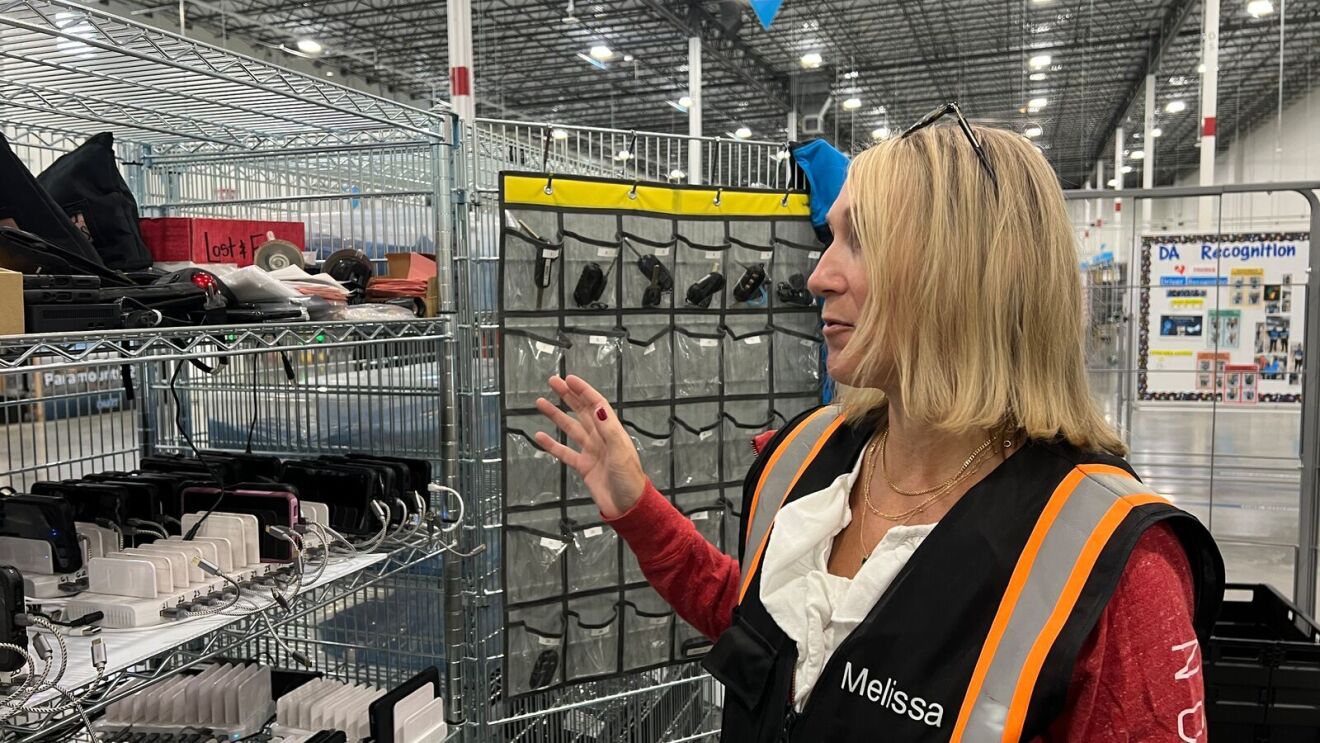
Amazon just finalized our delivery routes for the day, so I work with our dispatcher to assign individual routes and vans to each of my drivers. Each route has a different number of stops and packages, so we have to make sure we assign the right size vehicle for each route.
9:20 a.m.
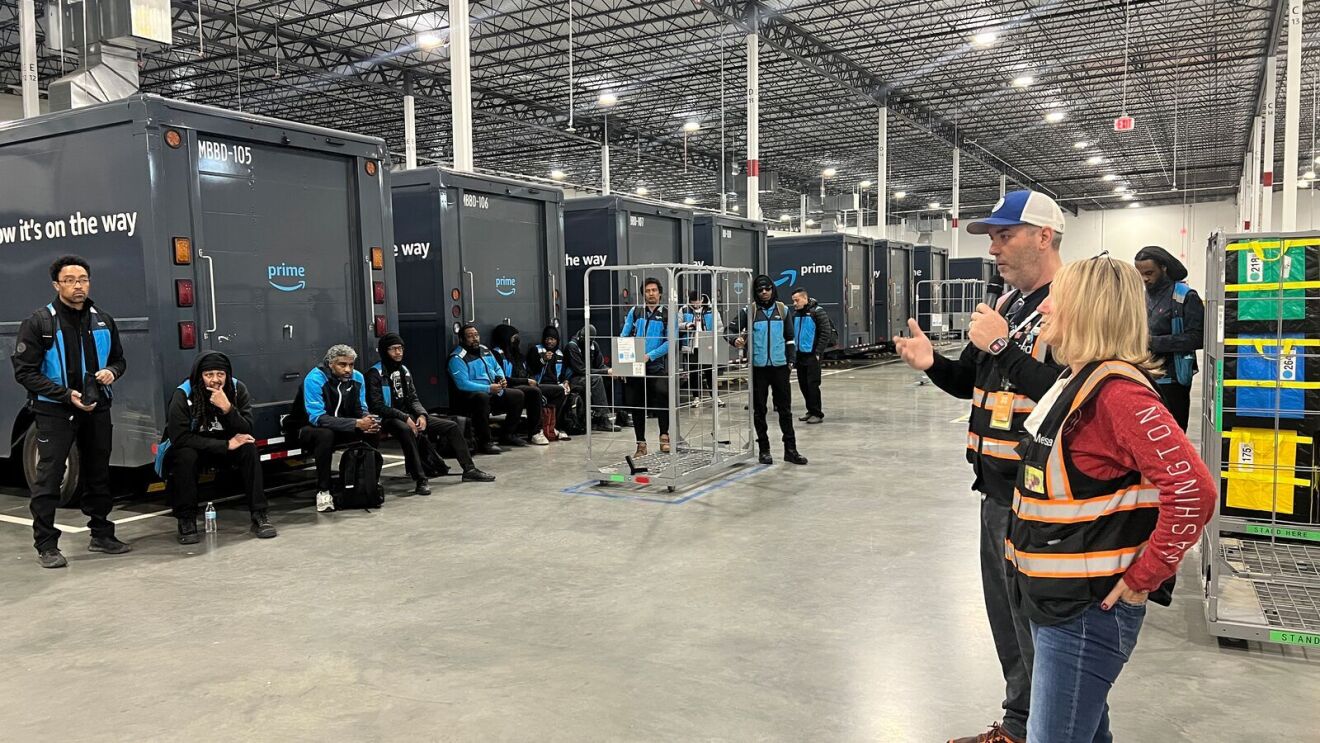
It’s start-up meeting time! Every day, Brad and I meet with all of our employees, provide announcements for the day, and review safety reminders. After that, my drivers prepare for load-out.
9:50 a.m.
01 / 03
Load-out begins and our first wave of drivers and vehicles lines up at the launch pad. MBB Delivery typically has three 20-minute waves departing from this delivery station, seven days a week. Our drivers typically have at least 150 stops and deliver 200 to 300 packages a day, but it could be more if they are delivering to high-density areas like apartment buildings.
10:10 a.m.
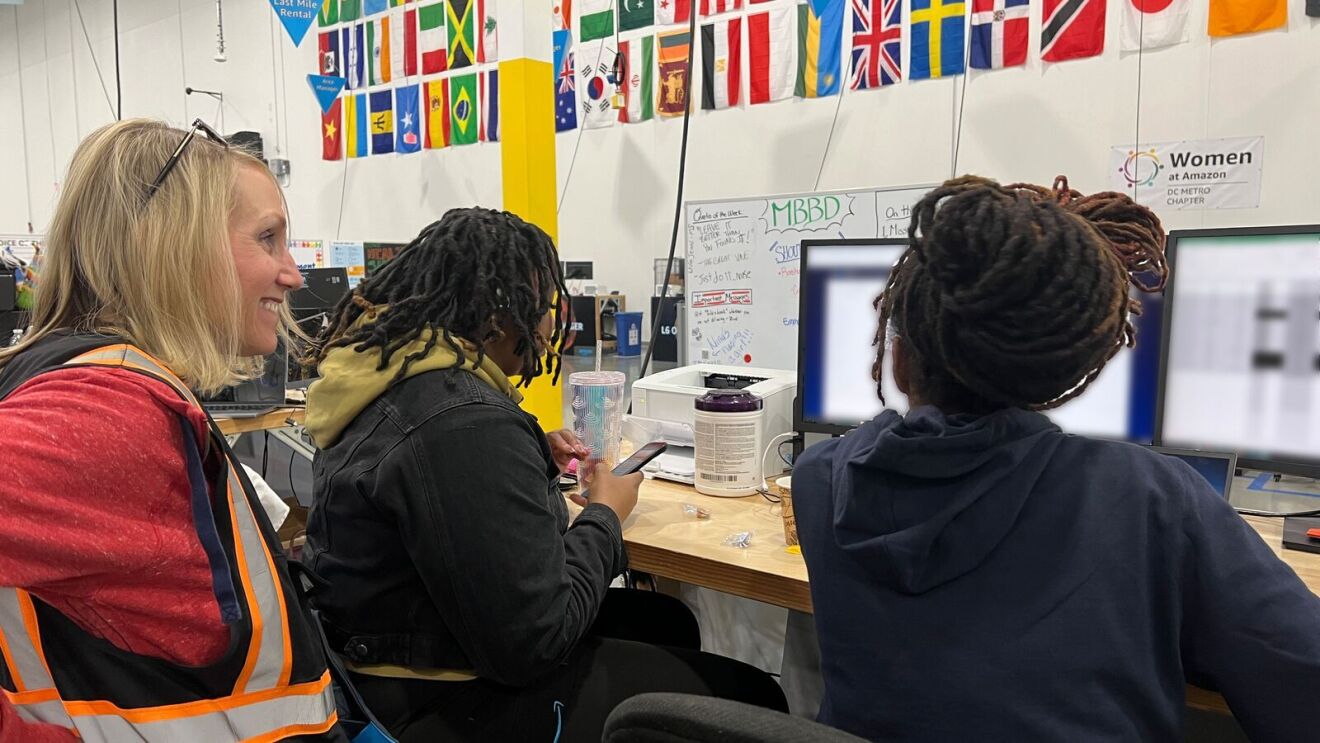
The first wave has left the warehouse. Most days, I would hop into my car and head to the other delivery station we operate out of in Upper Marlboro, but Brad is going there today so I’m going to stay at our Beltsville location.
10:50 a.m.
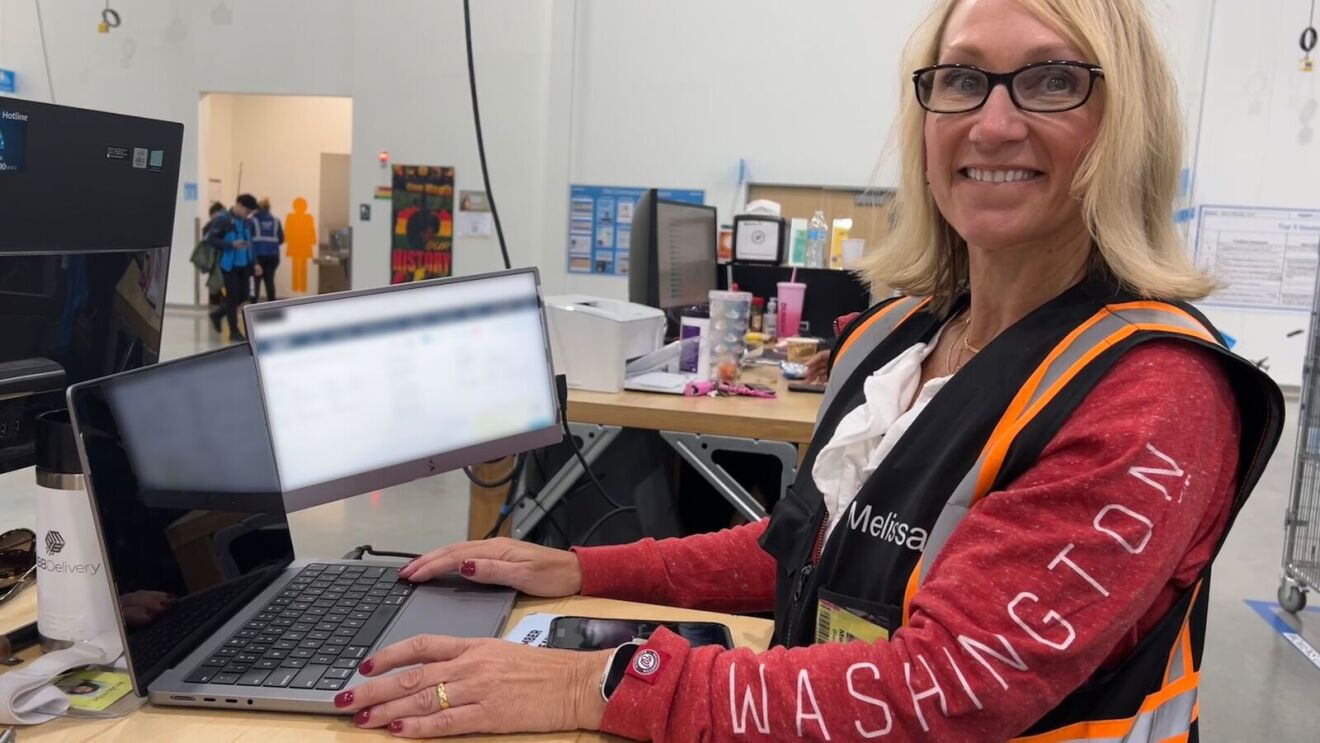
I head back to my desk and make sure that our routes are running smoothly. One of my favorite aspects of my job is the fact that our delivery area is part of my community. We are literally delivering to our own house and our neighbors, and being able to work here and employ people from our community is so satisfying.
12 p.m.
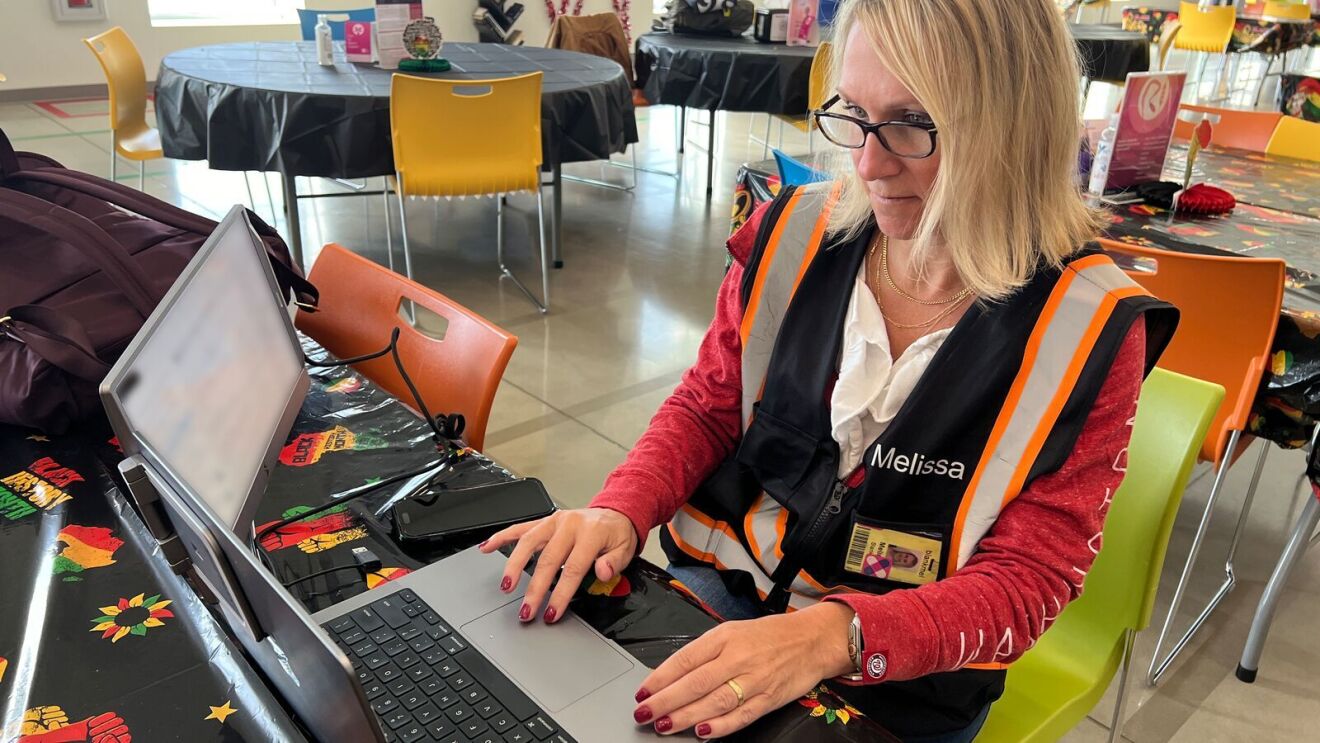
I grab lunch and check in with dispatchers from both stations. My drivers will also be taking their 30-minute lunch break around this time. I typically tell them to bring food or get some if they’re stopping somewhere to use the bathroom, because they may not be in an area that’s easy to stop for lunch.
1 p.m.
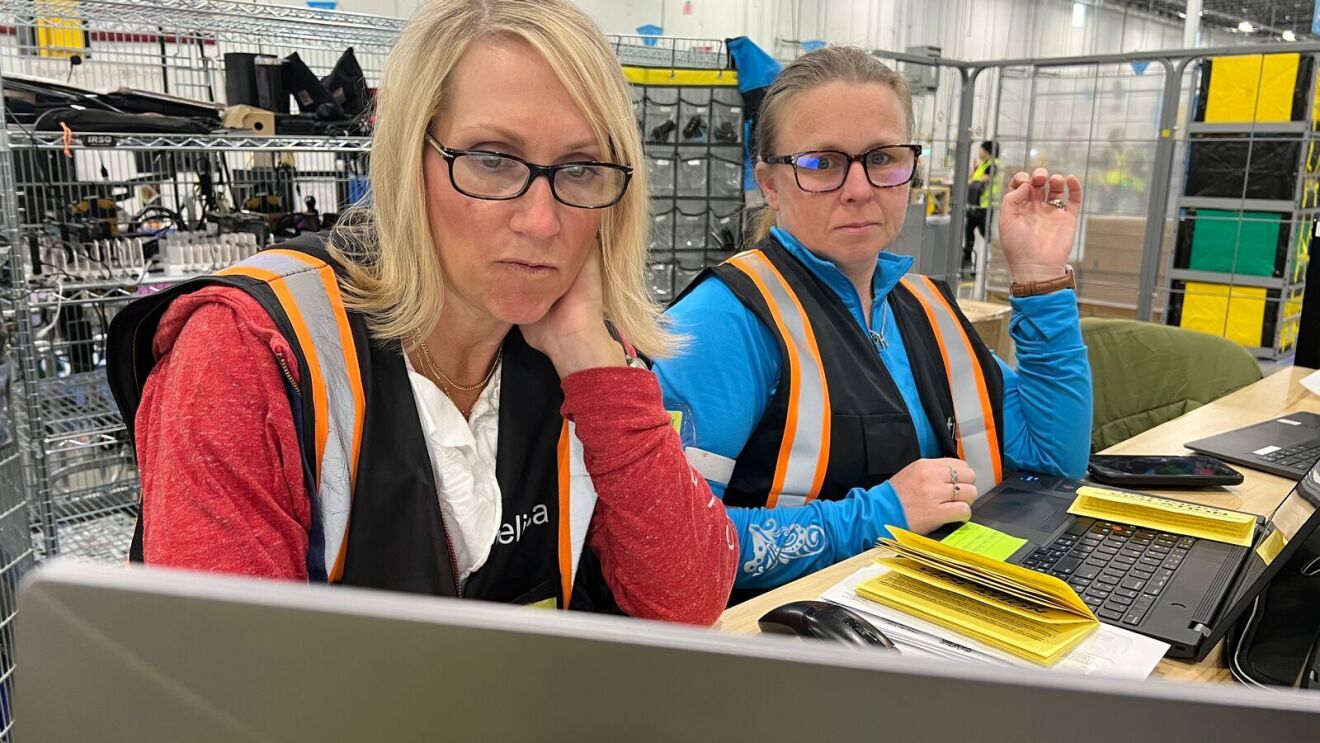
Each week, I meet with Emily, my Amazon business coach. She’s my liaison to Amazon and is there to help us succeed. We also partner with the delivery station on the road (OTR) team. Today, I met with Julie, the operations manager, and discussed driver access issues with delivering to some apartment buildings. Amazon always helps if we have access issues or problems with customer delivery instructions. I feel like there’s a good balance between the autonomy I have to run my own business and the support Amazon provides. My husband and I can create our own team culture and decide how we want to run the business and how many people we should hire, and for which types of roles.
1:35 p.m.
I do a quick weather check. We get regular weather updates from Amazon and have the autonomy to cancel routes or run on a modified schedule if we don’t think it’s safe to deliver. My team’s safety is the top priority. This winter, Amazon gave us ice cleats and headlamps for drivers, and ice scrapers and shovels for the vans. In the summer, they provide big, reusable water bottles, cooling towels, sunscreen, and electrolyte packs. And there’s always plenty of water and snacks available at the stations.
2:40 p.m.
I head back home to do some administrative work, like scheduling. This is definitely one of the more stressful aspects of my job because we overschedule by 20% to account for people who may call out sick or not show up. We employ 250 people and the majority of those are drivers, but we have other roles like dispatchers, fleet managers, an HR manager, and an executive assistant.
Several drivers have been with us for more than three years, and one of our drivers was recognized by Amazon for having some of the best track records for safety and delivery completion.
Our drivers are like family to us, so we want to treat them well. We offer medical, dental, vision, accident, hospital, short-term disability, and life insurance. We also subsidize 75% of the premiums for many of those insurance types. We participate in a 401(k) program—which Amazon reimburses in part—wherein we match 2% of contributions. We also offer up to $5,250 a year in tuition assistance per eligible driver via the Next Mile program. Our employees also get paid time off, and paid time off for parental leave.
5 p.m.
I get a call from our fleet manager, who tells me that one of our vans that was in the repair shop is fixed, which is great news. Every DSP is responsible for managing their fleet of vehicles. Amazon will help cover preventive maintenance like oil changes and our insurance. We’re responsible for paying for any repairs and damages, like a nail in the tire or repairs to things like the air conditioning.
6 p.m.

Brad just got home, so we get dinner ready. I’ll usually read or watch TV until our end-of-day reports come in from each station, and then it’s bedtime. This job is seven days a week, but I really enjoy what I do, and it helps that we’ve built a wonderful team of reliable people who help us deliver to Amazon customers.


